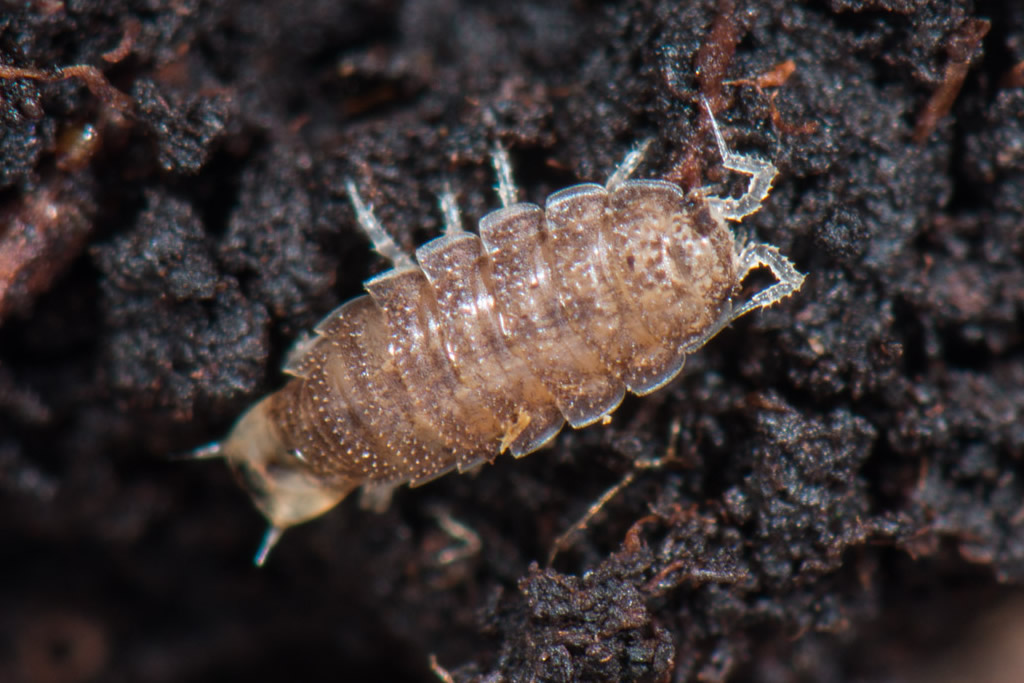Styloniscus mauritiensis (Barnard, 1936)
Status:
GB IUCN status: Not applicable (non-native)
ID Difficulty
Identification
The pygmy woodlice of family Styloniscidae (and Trichoniscidae) are readily distinguished from other woodlice by the shape of the antennal fagellum which comprises a tapered cone (of indistinct segments) bearing a terminal bristle.
Styloniscus mauritiensis is a small (females to 3.25 mm body length), reddish species, with a tuberculate body and an eye composed of three ommatidia. However, there are other similar species, such as Cordioniscus stebbingi and S. spinosus occurring in heated glasshouses.
Identification should be based on a male specimen. A brief description, with figures, is given by Gregory & Lugg (2018).
Distribution and
Originally known from Royal Botanic Gardens Edinburgh where specimens were collected within peat inside plant pots in a heated glasshouse in 1986 (Collis & Harding, 2007). It was refound there in 2015 during the BMIG field meeting and, subsequently, at a few other tropical glasshouses in England and Wales (Gregory & Lugg, 2018; Gregory, 2025)
Habitat
Styloniscus mauritiensis favours damp peaty substrates, being found among peat in pots, among peaty debris on capillary matting on glasshouse staging, in damp peaty debris within a rotting palm stump and under dead wood lying or peaty soil.
In 'the wild' S. mauritiensis is known from the islands of Hawaii and Mauritius.
References
Gregory, S.J. (2025) 15 years on: An update to Woodlice and Waterlice in Britain and Ireland, part 2 ~ Non-native species, not yet naturalised. Bulletin of the British Myriapod and Isopod Group, 37: 7-25.
Gregory, S.J. & Lugg, K. (2018) Styloniscus mauritiensis (Barnard) – an overlooked woodlouse of tropical glasshouses new for England and Wales (Isopoda, Oniscidea: Styloniscidae). Bulletin of the British Myriapod & Isopod Group 30: 26-32.
Links
World List of Marine, Freshwater and Terrestrial Isopod Crustaceans: https://www.marinespecies.org/isopoda/aphia.php?p=taxdetails&id=263338





